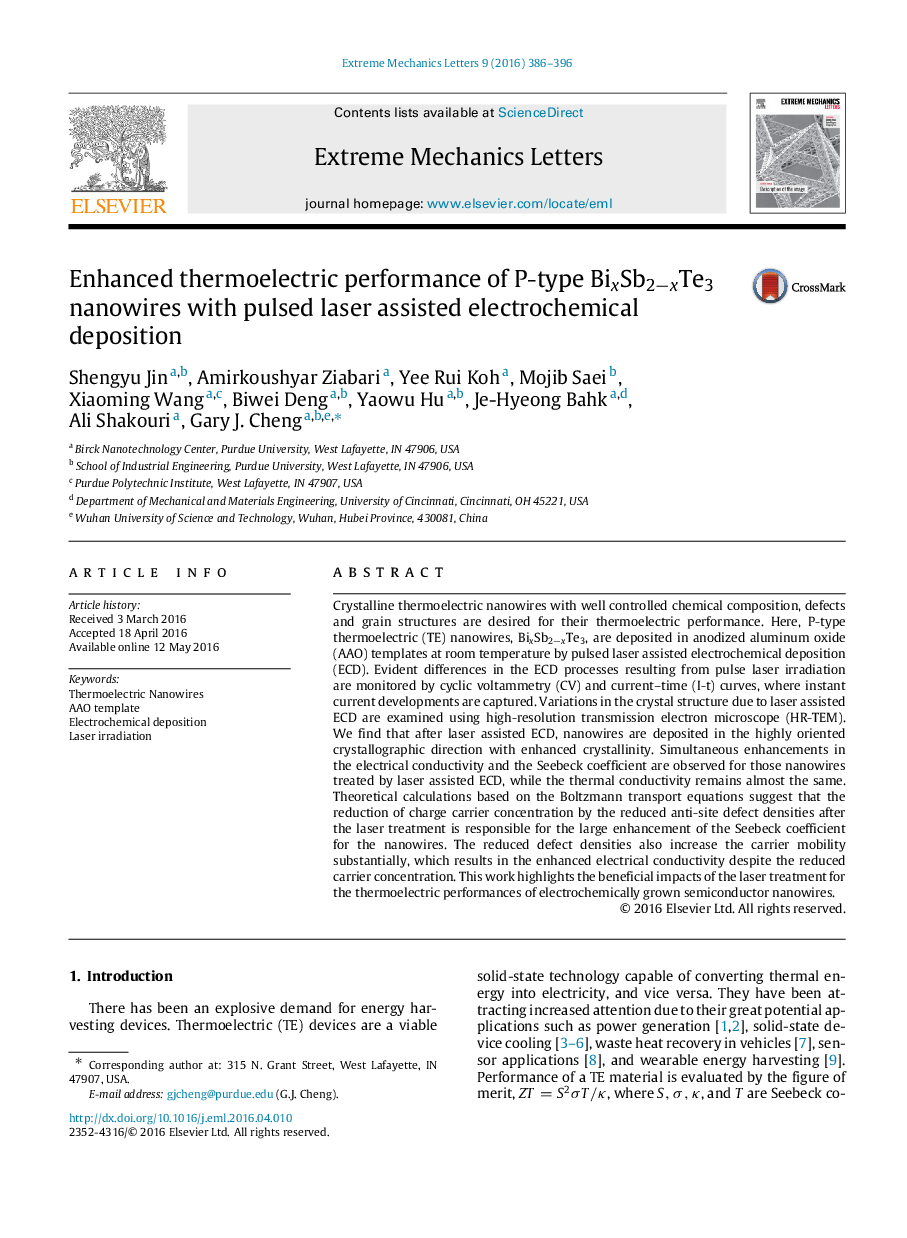| Article ID | Journal | Published Year | Pages | File Type |
|---|---|---|---|---|
| 5014643 | Extreme Mechanics Letters | 2016 | 11 Pages |
Crystalline thermoelectric nanowires with well controlled chemical composition, defects and grain structures are desired for their thermoelectric performance. Here, P-type thermoelectric (TE) nanowires, BixSb2âxTe3, are deposited in anodized aluminum oxide (AAO) templates at room temperature by pulsed laser assisted electrochemical deposition (ECD). Evident differences in the ECD processes resulting from pulse laser irradiation are monitored by cyclic voltammetry (CV) and current-time (I-t) curves, where instant current developments are captured. Variations in the crystal structure due to laser assisted ECD are examined using high-resolution transmission electron microscope (HR-TEM). We find that after laser assisted ECD, nanowires are deposited in the highly oriented crystallographic direction with enhanced crystallinity. Simultaneous enhancements in the electrical conductivity and the Seebeck coefficient are observed for those nanowires treated by laser assisted ECD, while the thermal conductivity remains almost the same. Theoretical calculations based on the Boltzmann transport equations suggest that the reduction of charge carrier concentration by the reduced anti-site defect densities after the laser treatment is responsible for the large enhancement of the Seebeck coefficient for the nanowires. The reduced defect densities also increase the carrier mobility substantially, which results in the enhanced electrical conductivity despite the reduced carrier concentration. This work highlights the beneficial impacts of the laser treatment for the thermoelectric performances of electrochemically grown semiconductor nanowires.
